By Jennifer Hemphill, IIDA, NCIDQ | Senior Designer
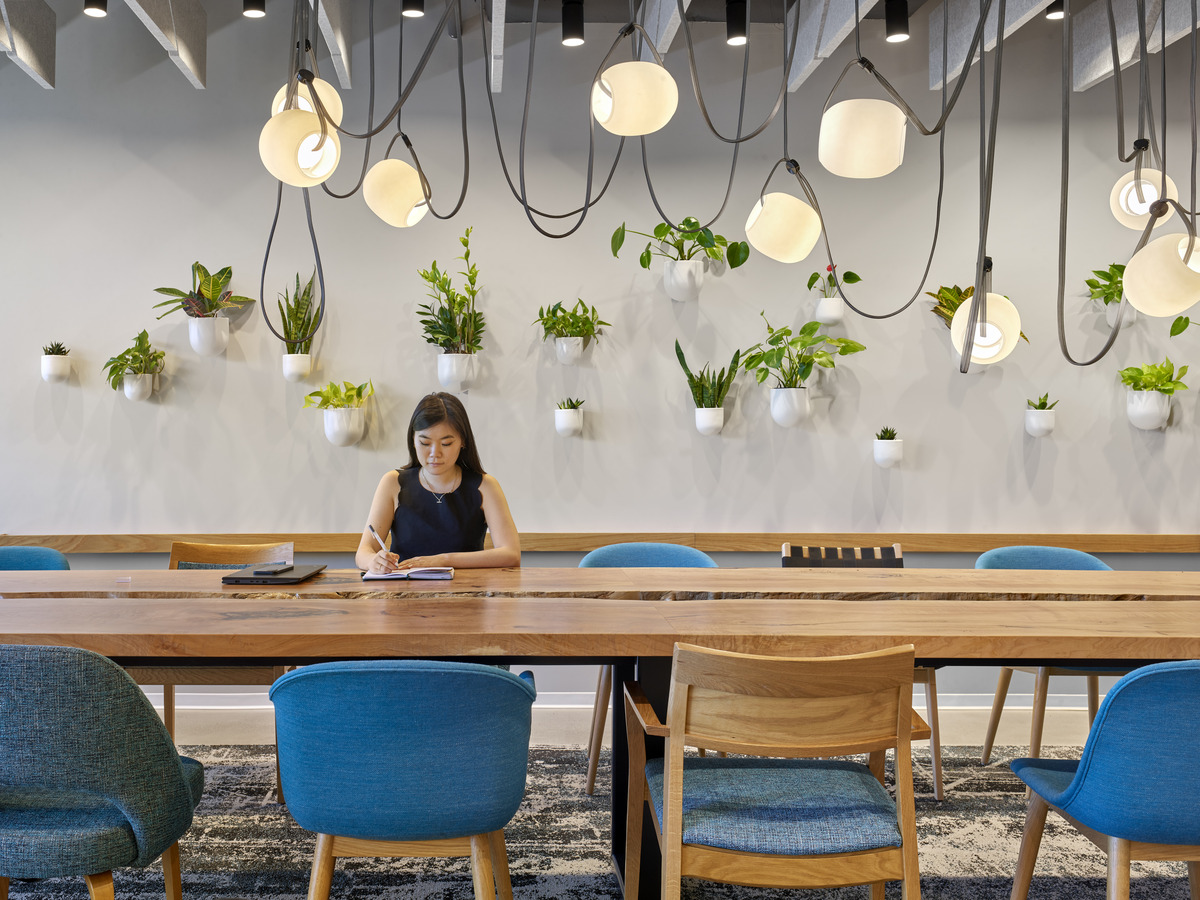
Photography © Halkin Mason Photography.
For the past two years, a plethora of professionals have found themselves working in sunlit living rooms, at dining room tables, or basking in natural light on balconies, in backyards, or at parks, and this is causing a change in the corporate office landscape. As employees slowly return to the office, corporate clients are asking designers how similar experiences can be created in the workplace. In new and exciting ways, leading companies are focused on and prepared to invest in biophilic design.
A long-time client recently asked our Philadelphia studio to bring biophilia into their office space. The initial request, met with thoughtful discussion and many questions, was for interior plantscaping. In an extensive deep dive over multiple sessions, the IA team and client explored the company’s drivers and concerns from the perspective of biophilic design. The result was 50+ pages of guidelines tailored to the client’s specific mission that summarized the 14 points of biophilic design, offered examples of applying biophilia well beyond plantscaping, and included implementation plan examples and cost modeling. The result was not only a document that the client could use for current and future projects, but more importantly it became a tool to educate and create more integrated and thoughtful biophilic design opportunities.
With those guidelines in mind, here are five surprising ways that biophilia can work its way into any project, existing or new, that we explored with the client through our process.
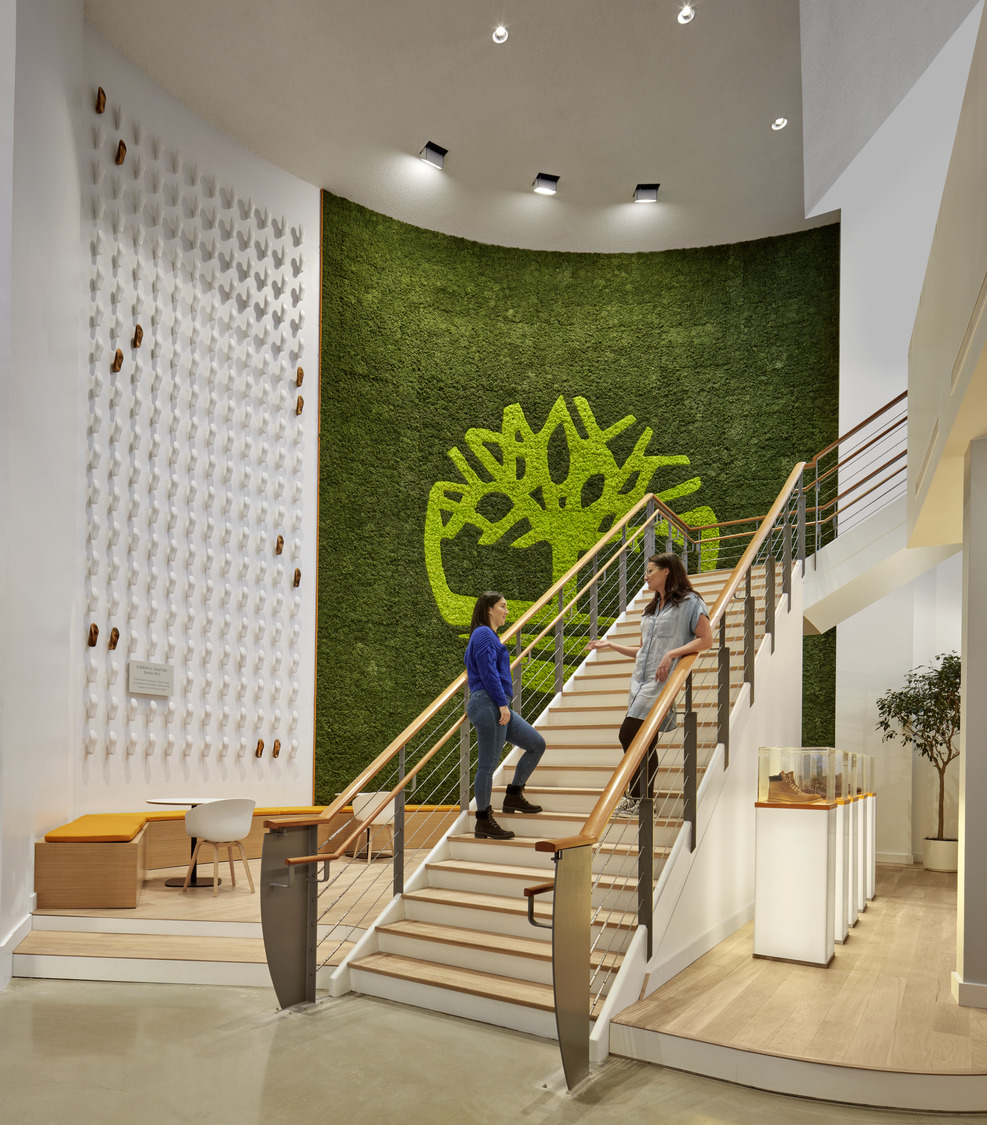
The Timberland Headquarters in Stratham, NH, features many moments of both refuge and prospect. Photography © Robert Benson.
1. Planning
Many of the 14 points of biophilic design can and should be taken into consideration as early as the test fit/planning phase. The last five of the 14 points, categorized as the nature of space, which include complexity and order, prospect, refuge, mystery and risk/peril, can be achieved through simple yet powerful planning gestures. Prospect, for example, can be realized by planning spaces with open, expansive, unimpeded views, whereas refuge is created by planning spaces that feel more sheltered, protected, and away from main circulation. Mystery requires designing spaces so that they pique curiosity and allude to what is beyond without providing the full picture from afar.
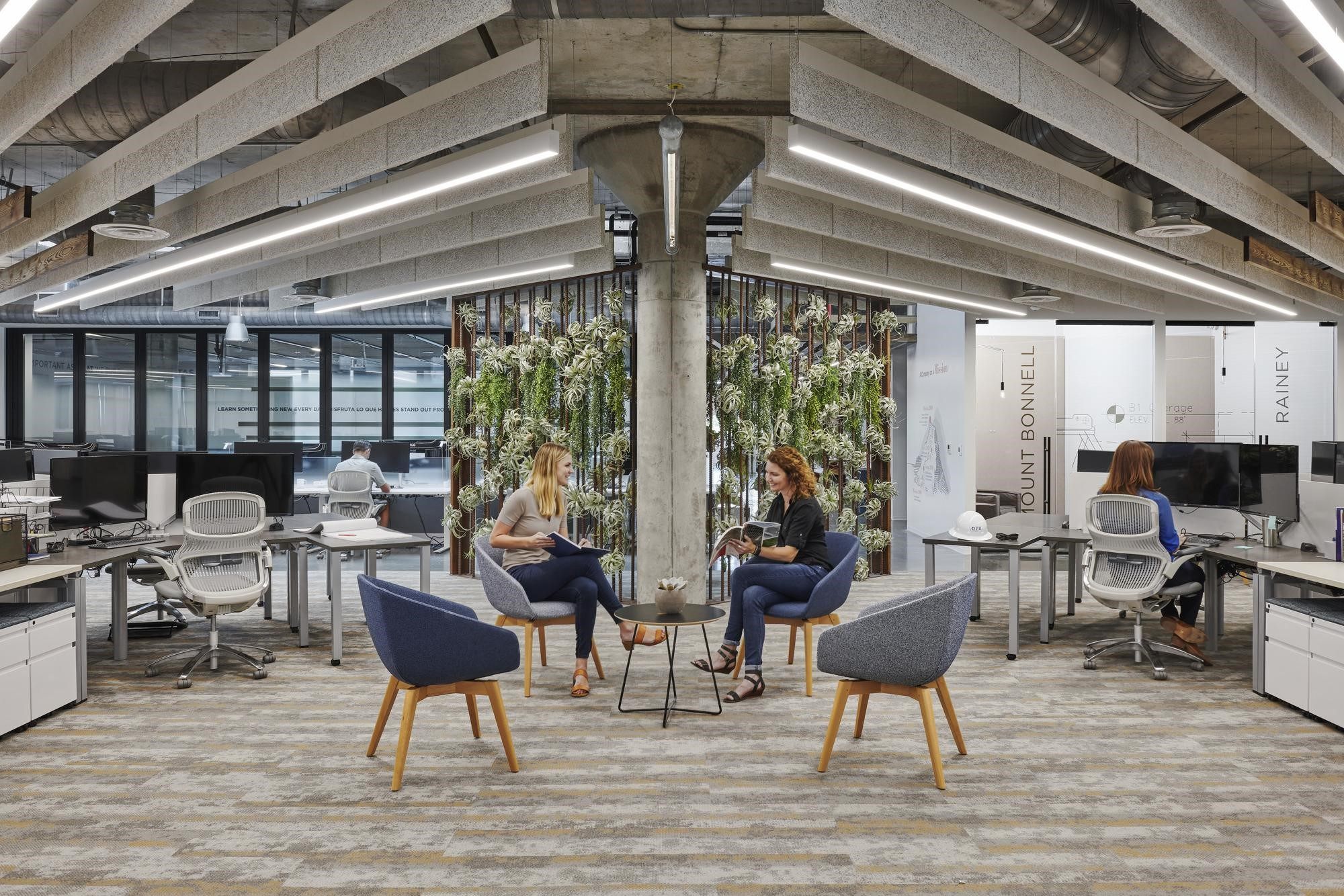
DPR's Austin location features a biophilic screen that aids in creating visual privacy, as well as access to living greenery. Photography © Peter Molick.
2. Furniture Selection & Orientation
It’s understood that selecting finishes and fabrics with biomorphic patterns is a big part of biophilic design. However, the selection and placement of furniture can further support a biophilic scheme. There are a multitude of available furniture choices that create the feeling of refuge or shelter with screens and booth-like settings. Positioning furniture so that the user’s back is protected further supports this biophilic principle. Conversely, selecting furniture that is standing height or positioned with a low open horizon can provide the user with an unobstructed view of the surroundings that supports the biophilic principle of prospect. As part of the guidelines, we included furniture options that incorporate planters and screens into the furniture itself, allowing for living greenery within the space without an additional investment in millwork or planters. Variety is the name of the game when selecting furniture that supports a biophilic interior landscape, mindful that no two features are exactly alike in nature.
3. Multi-Sensory Experience
Nature engages all of our senses. Biophilic design is not just about seeing patterns or textures. We experience nature by hearing sounds like water flowing or the wind blowing. We smell the change in fresh air as we walk along a path. We feel the temperature change as we move into sunlight or shadows. While developing the guidelines with our client, we discussed ways to incorporate more of these sensory experiences throughout a space. Utilizing AV and technology already designed into a project is a budget-friendly way to incorporate biophilic elements. Ceiling speakers in meeting rooms can be utilized to introduce nature sounds in lieu of traditional white noise. Digital display screens can show imagery from nature in motion. Instead of traditional static film for privacy, drapes will create a more tactile and flexible user experience. EGD opportunities can further support a multi-sensory experience through interactive displays that engage all the senses.
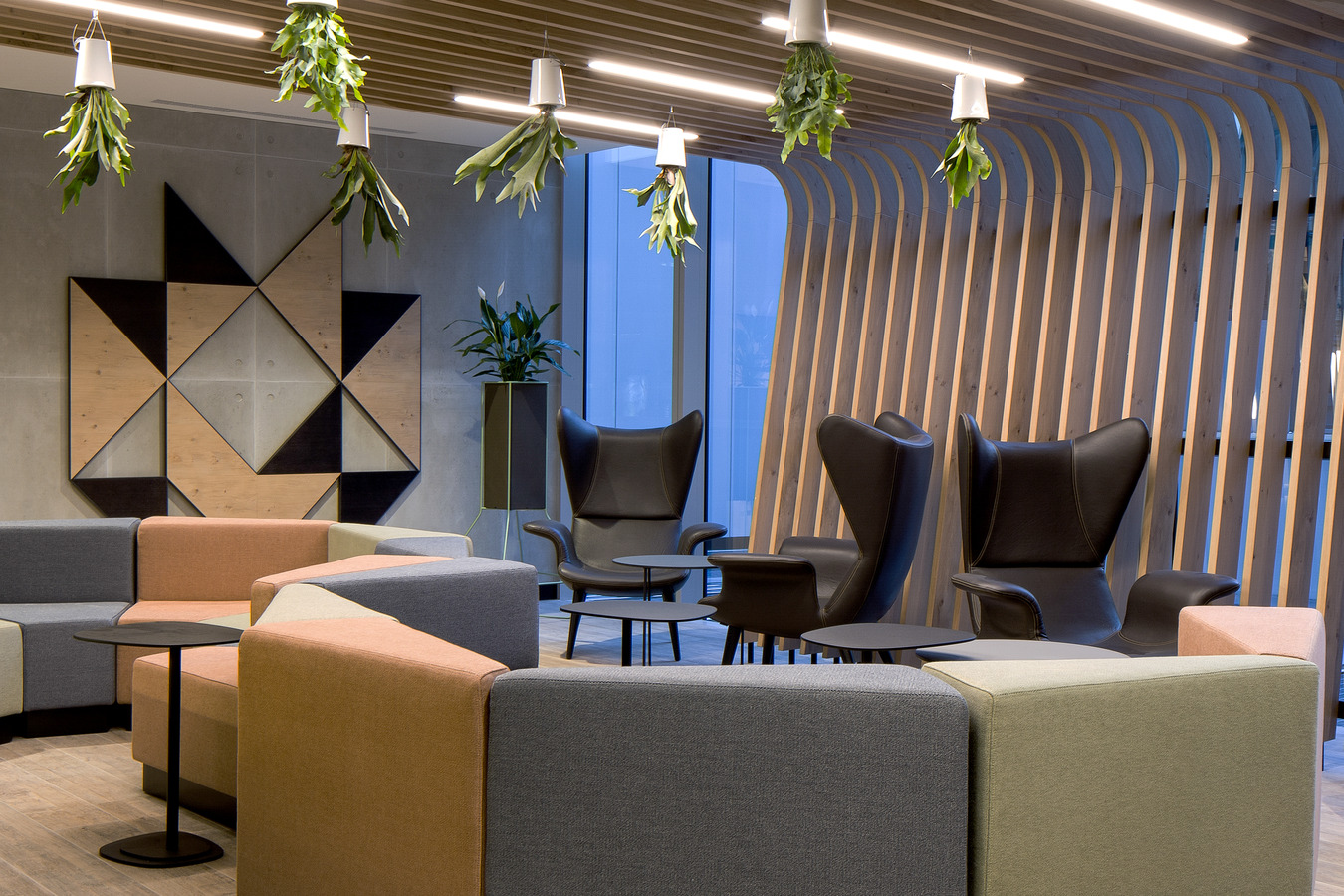
This IA-designed workplace in Milan features lighting that adjusts over the course of the day to mimic the natural daylight, supporting users' circadian rhythms. Photography © Giulia Parmigiani.
4. Variability
Nature is constantly changing. This is one of the reasons that we humans find it so appealing. Historically, office space is often repetitive and static. Bringing variability into an office design brings us back to nature in a subtle yet impactful way. Examples include providing operable windows or air-temperature devices that allow greater user control. Introducing green walls and living plants into a space can also create variability, since many plants go through a natural life cycle similar to the seasons. Also, lighting can be designed to mimic the variability of nature with daylight controls in open spaces or decorative fixtures that let light filter through and change throughout the day.
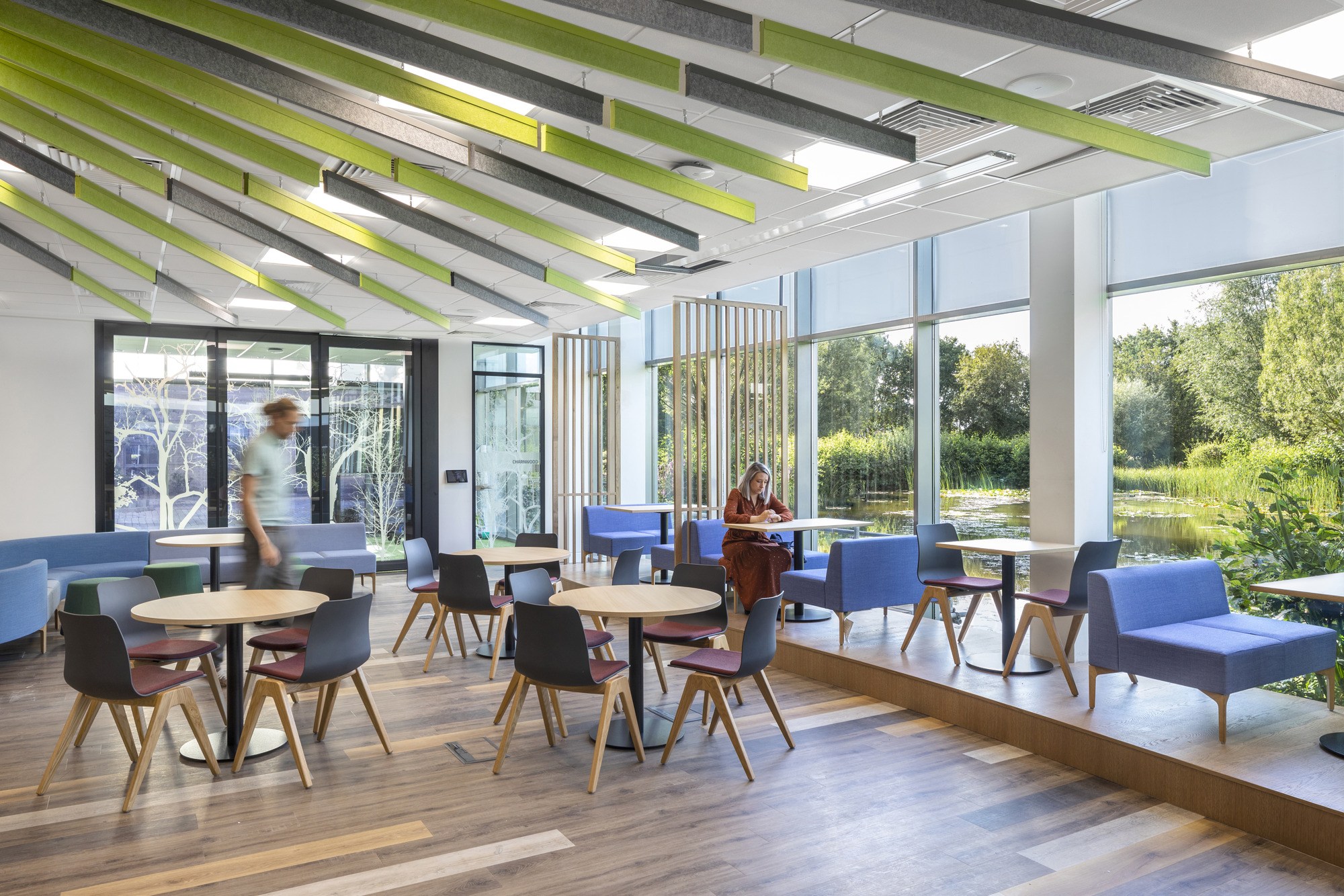
Views to the exterior are proven to have measurable effects on employee wellness. Hewlett Packard Limited, Bracknell, UK. Photography © Riiko-Andre Nuud.
5. Beyond the Interiors
A visual connection to nature is the first of the 14 points of biophilic design. From an interiors standpoint we often see this as space planning with a view to the exterior. However, while creating the guidelines for our client we looked at their campus as a whole, first studying the various buildings and then their views to the exterior. This led to a discussion of how existing outdoor patio spaces could be better employed as an extension of the interior workspace. We are now in the process of providing options for the full campus design to outfit each patio with furniture settings that support the client’s new mission. In the end, it is about bringing the outside in as much as bringing the inside outside.
Working to create the guidelines allowed us to explore new and expanded opportunities for biophilic design while helping our client understand its importance to the health and wellbeing of their employees. As humans we are inherently intrigued by and drawn to nature. Incorporating plants is an important factor in any biophilic scheme, but there are so many opportunities and considerations well beyond greenery.

